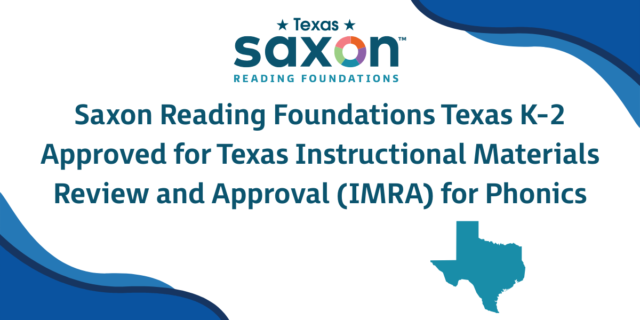
Literacy is a cornerstone of elementary education, pivotal in shaping students’ academic journeys and opening doors for them in the future. Many children need additional, responsive support to master the nuances of reading and writing.
This is where small-group literacy intervention becomes crucial. The most effective interventions offer a targeted, supportive environment where students struggling with literacy can flourish.
In these focused settings, the emphasis is on discovering each student’s unique learning needs. That’s why small-group instruction and responsive teaching offer the perfect structure and support for students to catch up with their peers.
Every educator wants to create inclusive, nurturing spaces where students feel valued and empowered. Small groups let teachers closely observe and respond to each child’s progress, adjusting instruction to keep children engaged and progressing. This approach aligns with best practices in literacy education, focusing on building foundational skills, confidence, comprehension, and an enjoyment of reading and writing.
Understanding Small-Group Literacy Interventions
Each child’s literacy journey is unique. Small-group intervention plays a pivotal role in honoring this individuality—providing a structured yet flexible approach to address specific literacy challenges. Understanding these interventions’ purpose and impact is key to getting the most out of them in any classroom.
Defining Small-Group Literacy Interventions
Small-group literacy interventions are tailored instructional sessions that work best with three or four students. This allows for more personalized interaction between teacher and student. The focus is to support students who are struggling with reading and writing, helping them to build foundational skills, gain confidence, build background knowledge, and improve comprehension.
Effectiveness in Elementary School
Research consistently shows that small-group settings enhance literacy learning, especially for students who find reading and writing challenging. The key lies in the targeted, intensive nature of these interventions. By working in smaller groups, educators can offer more individualized attention, quickly identify and address learning gaps, and adapt teaching strategies to suit each student’s pace and level of understanding.
These interventions are particularly effective in elementary classrooms because they align with the developmental needs of young learners. Small-group interventions provide the scaffolding they need to achieve literacy success.
The Role of Responsive Teaching
Central to small-group interventions is the concept of responsive teaching. This involves observing students during learning activities, diagnosing their strengths and areas for improvement, and adjusting instruction accordingly. Responsive teaching in small-group settings allows educators to create a dynamic learning environment where instruction is continuously adapted to meet the evolving needs of each student.
By focusing on immediate feedback and adjustment, small-group interventions become a powerful tool for accelerating literacy development. They create a safe, supportive space where students can take risks, make mistakes, and learn at their own pace, all under the guidance of a caring, skilled educator.
Key Strategies for Effective Interventions
For small-group literacy interventions to truly make a difference in elementary education, they must be built on a foundation of key strategies that cater to the diverse needs of young learners. These strategies not only address the immediate literacy challenges but also lay the groundwork for long-term academic success.
Let’s explore some of these essential strategies:
Differentiated Instruction
Differentiated instruction is at the core of effective small-group interventions. This involves tailoring teaching methods and materials to meet the varied learning styles, abilities, and interests of each student in the group. In practice, this might mean using different texts for different students, adapting the pace of instruction, or employing various teaching techniques to engage each learner effectively.
Focused and Intensive Learning Sessions
The effectiveness of small-group interventions hinges on the focus and intensity of the learning sessions. These sessions should be concise yet packed with activities that target specific literacy skills. This focused approach ensures that every minute of the intervention is purposeful and directly contributes to the students’ literacy development.
Consistent, Frequent, and Structured Lessons
Consistency and frequency are vital for the success of small-group literacy interventions. Regular sessions provide students with the ongoing practice they need to reinforce new skills and concepts. Structuring these lessons in a predictable way helps students feel secure and engaged, knowing what to expect each time.
Incorporating High-Interest, Level-Appropriate Materials
Using materials that are both appropriate for the students’ reading levels and high in interest is crucial. These materials should challenge students just enough to keep them engaged without causing frustration. A mix of fiction and nonfiction texts can cater to varied interests, making the learning experience more enjoyable and relevant.
Focus on Comprehension and Critical Thinking
While decoding words is a fundamental aspect of reading, literacy also includes understanding and critically thinking about the text. Small-group interventions should include discussions and activities that encourage students to think deeply about what they read, ask questions, and make connections to their own lives.
Integration of Writing
Writing is an integral part of literacy, and small-group interventions should include opportunities for students to express themselves in writing. This could range from writing responses to texts, to creative storytelling, enhancing their ability to communicate ideas effectively.
Measuring and Sustaining Progress in Small-Group Literacy Interventions
A crucial aspect of small-group literacy interventions is the ongoing assessment and reinforcement of the skills being taught. This continuous cycle of evaluation and reinforcement ensures that students not only make progress but also build upon their growth as a reader and writer.
Implementing Continuous Assessment
Continuous assessment is key in small-group settings. It involves regularly monitoring students’ progress through various methods, such as observation, reading records, and comprehension conversations. These assessments help educators understand each student’s strengths and areas for improvement, allowing for real-time adjustments in teaching methods. More importantly, they provide a clear picture of each student’s literacy journey, helping to identify specific needs and celebrate milestones.
Utilizing Formative Feedback
Feedback is an important part of the learning process, especially in literacy development. Formative feedback, given during or immediately after tasks, helps students understand their progress and what they need to focus on next. This kind of feedback should be specific, constructive, and encouraging, aimed at building confidence and guiding students towards greater proficiency.
Fostering a Growth Mindset
Encouraging a growth mindset in students is crucial for sustaining progress. This involves helping them understand that their abilities can be developed through dedication and hard work. Celebrating effort and resilience, rather than just success, instills a love for learning and a willingness to embrace challenges, which are vital for long-term literacy development.
Engaging Families in the Learning Process
Involving families in the literacy journey is another important factor. Regular communication with parents and caregivers about their child’s progress, along with practical tips on how they can support learning at home, strengthens the impact of the intervention. When families are engaged, students receive consistent support, both in and out of the classroom, reinforcing the skills learned during intervention sessions.
Measuring and sustaining progress in small-group literacy interventions require a combination of continuous assessment, personalized feedback, and adaptable teaching strategies. By focusing on these elements, educators can create a supportive learning environment where students not only improve their literacy skills but also develop a lifelong passion for reading and writing.
Empowering Young Readers with Effective Interventions
In exploring the landscape of small-group literacy interventions in elementary education, we’ve uncovered the significant role these targeted sessions play in shaping young learners’ literate lives.
Effective small-group literacy interventions require more than just a structured curriculum; they demand a responsive, dynamic, and personalized approach. By focusing on individual student needs, insisting on relevant and high-interest materials, and leaning into formative assessment and regular communication, educators can create a powerful learning environment that not only addresses literacy challenges but also ignites a passion for reading and writing.
Small-group literacy interventions are not just an academic strategy—they are a commitment to nurturing the potential of each young learner. By adopting these approaches, educators can make a profound difference in the lives of their students, guiding them toward a future where literacy is not just a skill, but a gateway to endless possibilities and achievements.
***
Want more information about small-group literacy intervention resources? Click here to connect with one of our expert team members.


